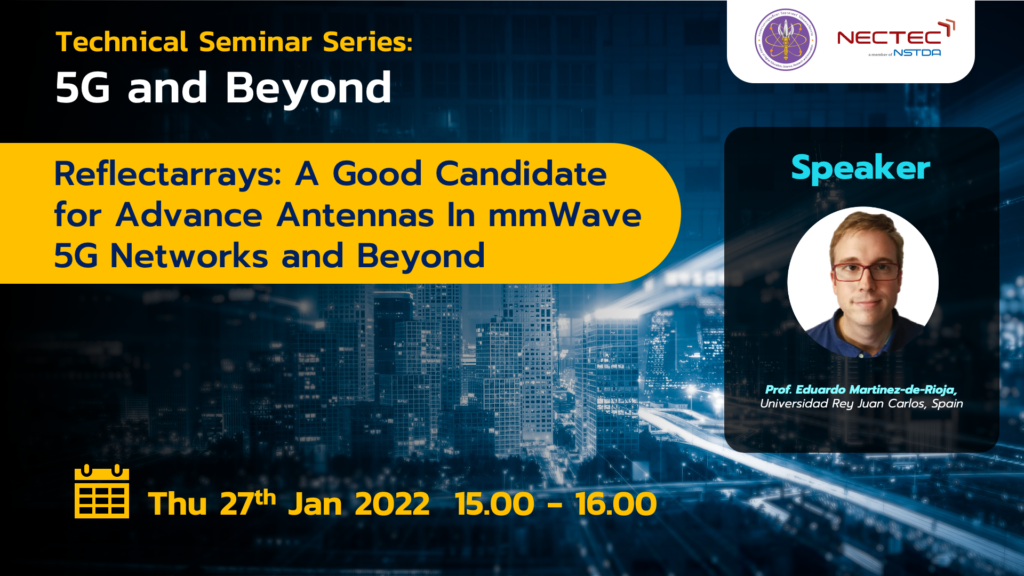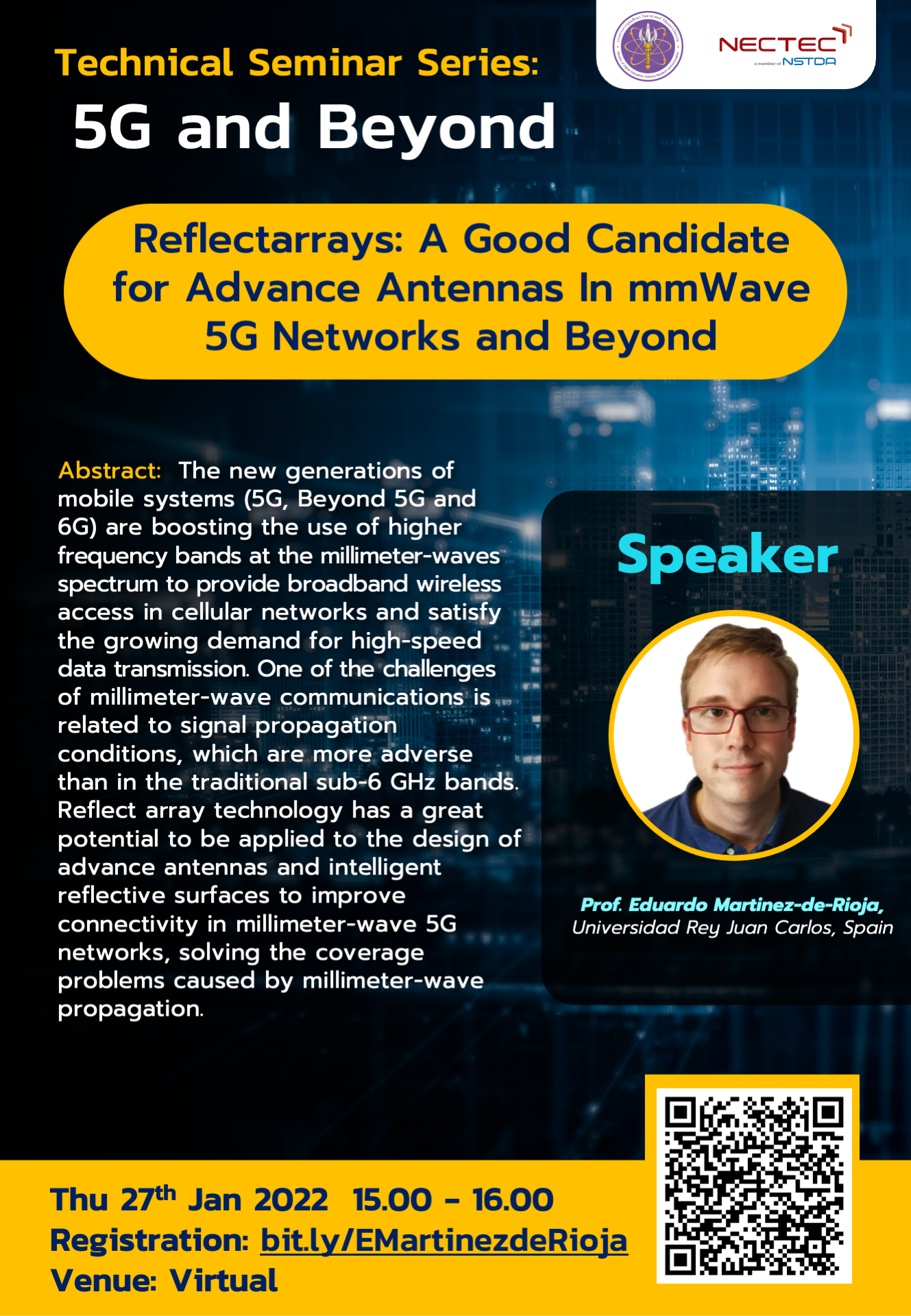
Abstract
The new generations of mobile systems (5G, Beyond 5G and 6G) are boosting the use of higher frequency bands at the millimeter-wave spectrum to provide broadband wireless access in cellular networks and satisfy the growing demand for high-speed data transmission. One of the challenges of millimeter-wave communications is related to signal propagation conditions, which are more adverse than in the traditional sub-6 GHz bands. Reflectarray technology has a great potential to be applied to the design of advance antennas and intelligent reflective surfaces to improve connectivity in millimeter-wave 5G networks, solving the coverage problems caused by millimeter-wave propagation.
A reflectarray antenna consists of a planar array of reflecting cells, typically implemented in printed circuit technology, which are illuminated by a primary feed. Reflectarrays do not require feeding or beamforming networks, so they achieve a significant reduction in ohmic losses, fabrication complexity and cost with respect to array antennas. Compared to conventional metallic reflectors, reflectarrays are able to provide independent operation at different frequency bands, to generate independent beams in orthogonal polarizations, and to implement beam reconfigurability when switching devices (PIN diodes, varactors, etc.) are integrated in their cells.
About Speaker
Eduardo Martinez-de-Rioja received the M.Sc. and Ph.D. degrees in Telecommunications Engineering from the Polytechnic University of Madrid (UPM), Spain, in 2014 and 2018, respectively. He developed his PhD thesis within the Applied Electromagnetics Group at UPM, under the supervision of Prof. Jose A. Encinar. In 2016, he was a visiting PhD student at the Electrical and Computer Engineering Department, University of Toronto, Canada. Since 2019, he is an Assistant Professor at the Universidad Rey Juan Carlos (Madrid, Spain). His research interests are related to the design of reflectarrays, frequency selective surfaces and other planar periodic structures for dual-band, dual-polarization and multibeam antennas, with application to satellite communications and millimeter-wave 5G.
Technical Seminar Series: 5G and Beyond | Reflectarrays: A good candidate for advance antennas in mmWave 5G networks and beyond
Venue: Virtual
Date: Thu 27th Jan 2022
Time: 15.00-16.00
Registration: https://bit.ly/EMartinezdeRioja
